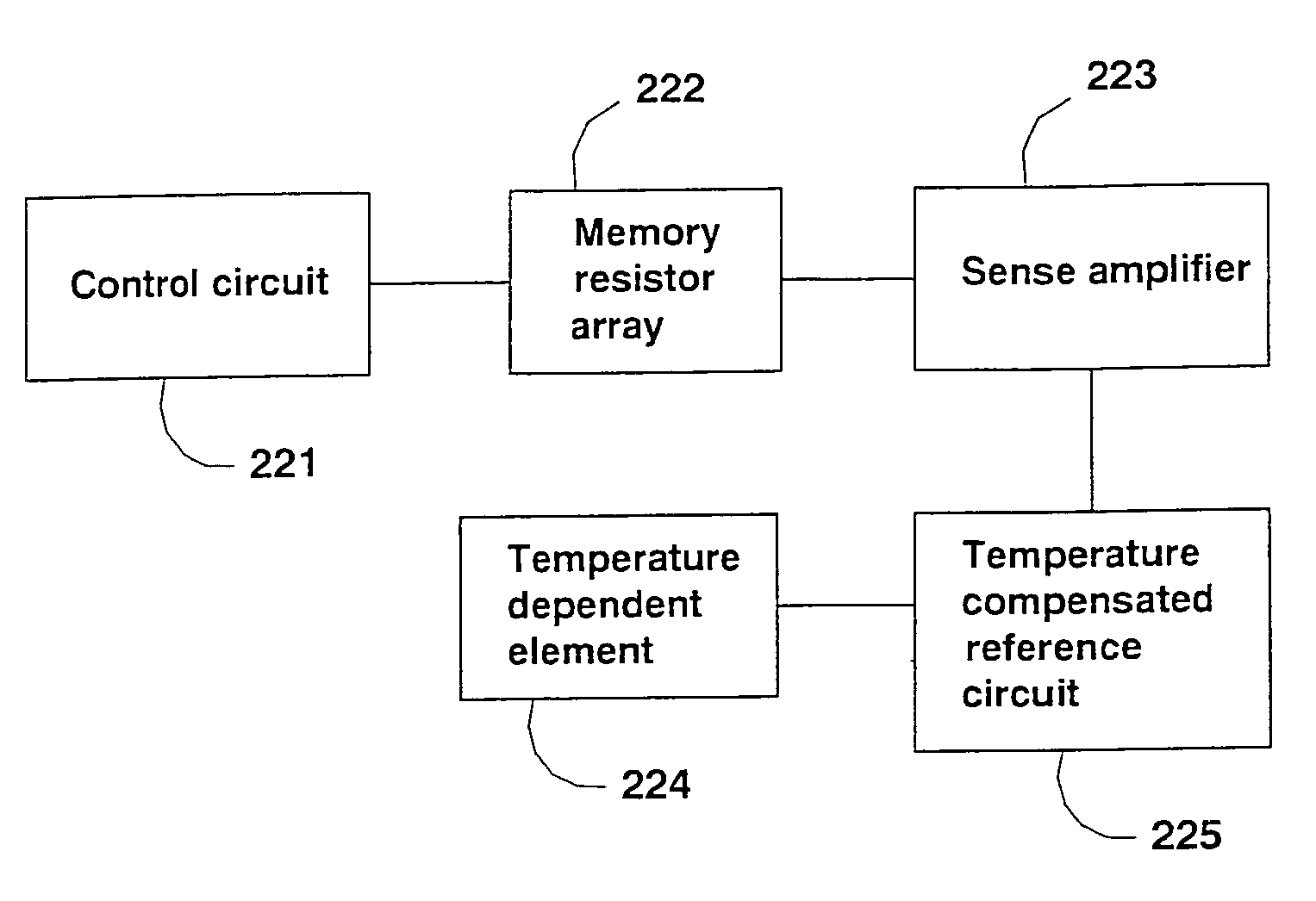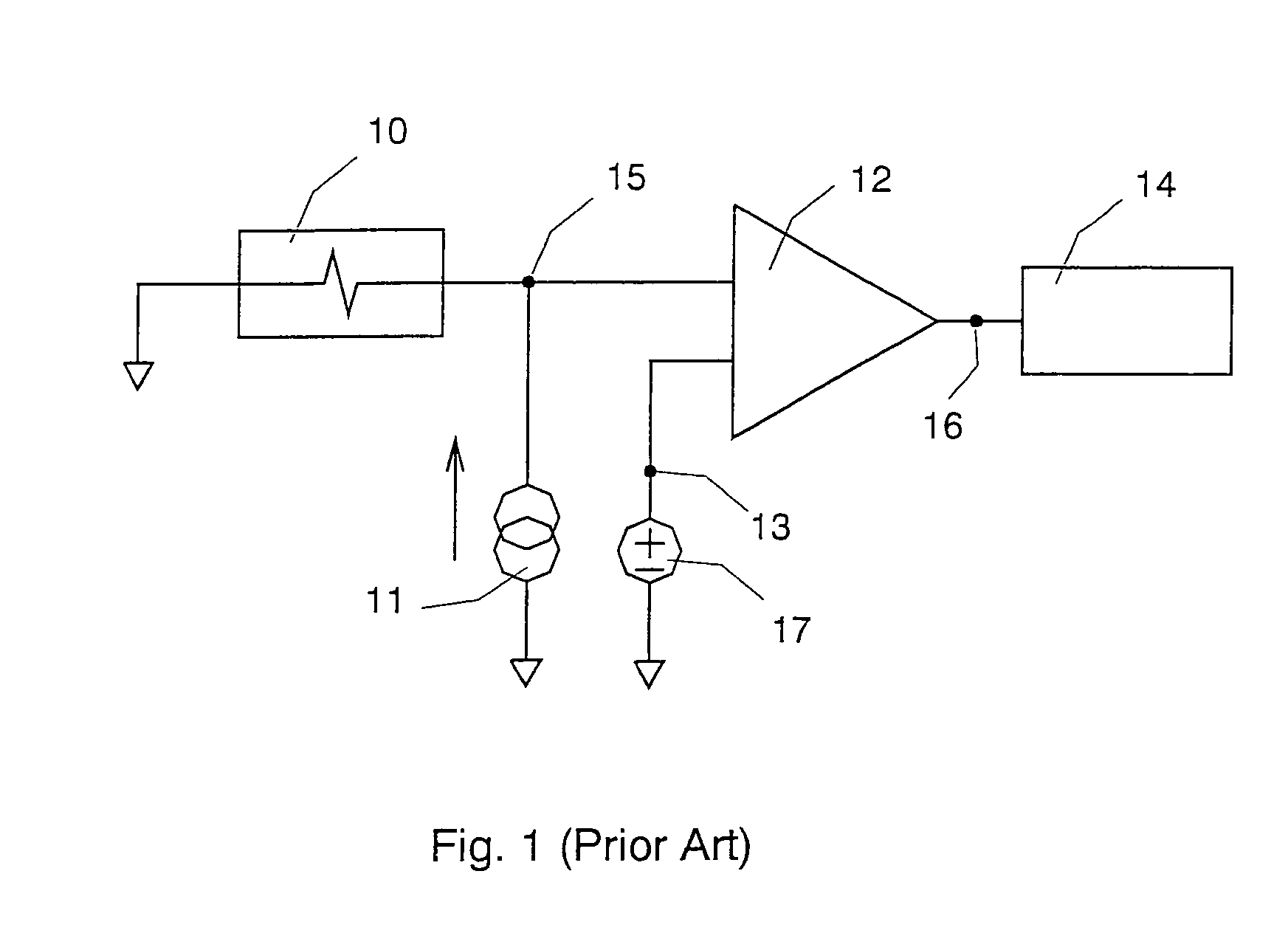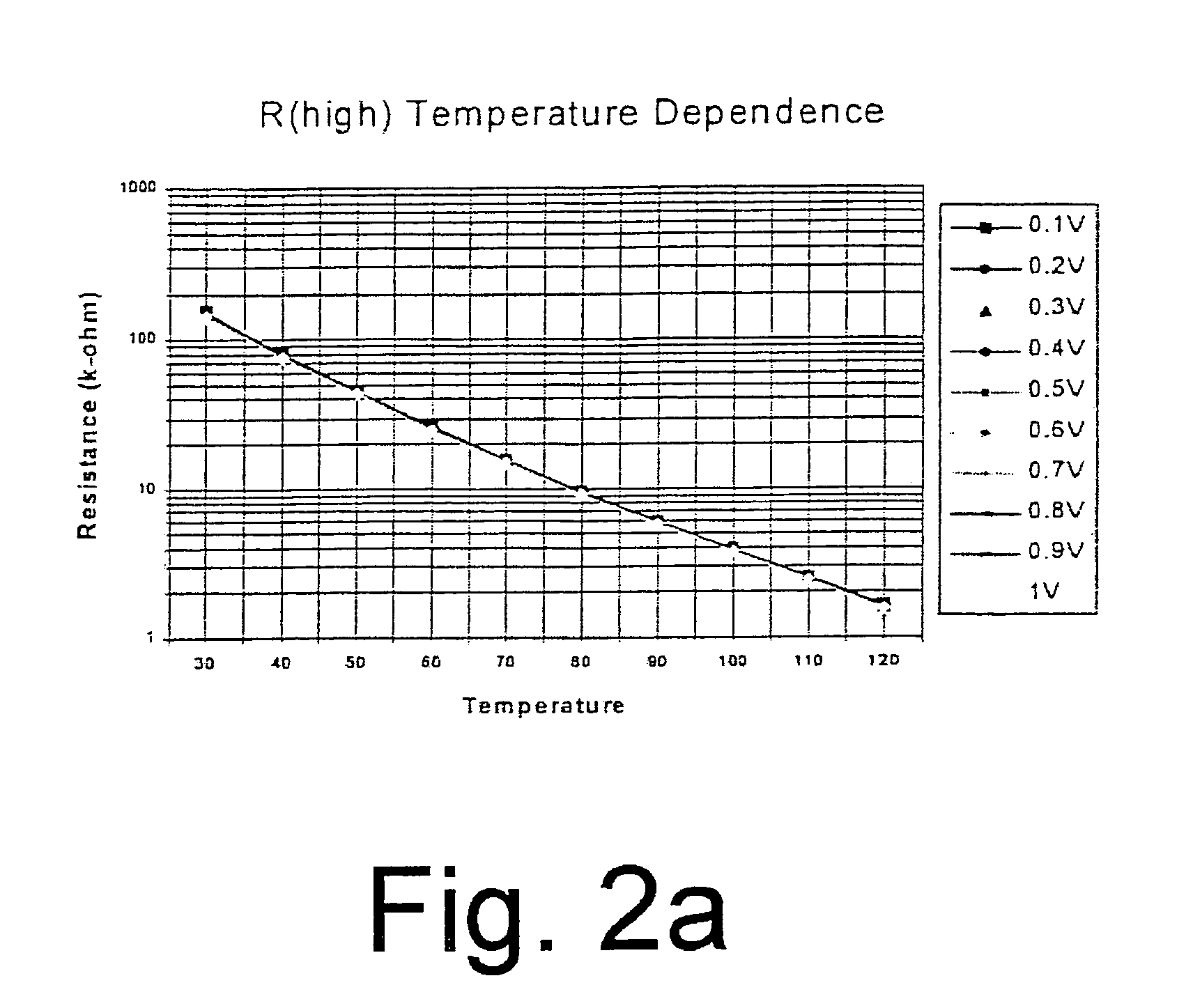RRAM circuit with temperature compensation
a resistor memory and temperature compensation technology, applied in solid-state devices, instruments, drawing-off water installations, etc., can solve the problems of ferromagnetic ordering and metallic conductivity, information loss in dram circuits with time, and loss of information stored
- Summary
- Abstract
- Description
- Claims
- Application Information
AI Technical Summary
Benefits of technology
Problems solved by technology
Method used
Image
Examples
first embodiment
[0125]FIG. 10 shows a block diagram of the present invention. The embodiment comprises a temperature sensor block 120, providing input to a control circuit block 121. The output of the control circuit block 121 is supplied to the memory resistor array 122 before reaching a sense amplifier block 123.
[0126]The temperature sensor block 120 includes a temperature dependent element and necessary circuit to provide a temperature dependent signal to the control circuit block 121. The temperature dependent signal from the temperature sensor circuit can be a voltage or a current, and this signal varies as a function of temperature. The temperature sensor circuit can also include a signal amplifier to amplify the temperature dependent signal.
[0127]The control circuit block 121 can include variable current source. The value of the variable current source is controlled by the temperature sensor circuit. The current source then supplies to the memory resistor array 122 to provide a temperature c...
second embodiment
[0141]FIG. 15 shows a block diagram of the present invention. The embodiment comprises a control circuit block 221 supplying to the memory resistor array 222 before reaching a sense amplifier block 223. The sense amplifier block 223 received a reference signal from a temperature compensated reference signal circuit 225. The temperature compensated reference signal circuit 225 is taking a temperature dependent signal input from a temperature sensor 224 to control the reference signal.
[0142]The temperature sensor block 224 includes a temperature dependent element and necessary circuit to provide a temperature dependent signal to the temperature compensated reference signal circuit 225. The temperature dependent signal from the temperature sensor circuit can be a voltage or a current, and that this signal varies as a function of temperature. The temperature sensor circuit can also include a signal amplifier to amplify the temperature dependent signal.
[0143]The temperature compensated r...
third embodiment
[0147]FIG. 17 shows a block diagram of the present invention. The embodiment comprises a first temperature sensor block 320, providing input to a control circuit block 321. The output of the control circuit block 321 is supplied to the memory resistor array 322 before reaching a sense amplifier block 323. The sense amplifier block 323 received a reference signal from a temperature compensated reference signal circuit 325. The temperature compensated reference signal circuit 325 is taking a temperature dependent signal input from a second temperature sensor 324 to control the reference signal.
[0148]The first temperature sensor block 320 includes a temperature dependent element and necessary circuit to provide a temperature dependent signal to the control circuit block 321. The temperature dependent signal from the temperature sensor circuit can be a voltage or a current, and that this signal varies as a function of temperature. The temperature sensor circuit can also include a signal...
PUM
 Login to View More
Login to View More Abstract
Description
Claims
Application Information
 Login to View More
Login to View More - R&D
- Intellectual Property
- Life Sciences
- Materials
- Tech Scout
- Unparalleled Data Quality
- Higher Quality Content
- 60% Fewer Hallucinations
Browse by: Latest US Patents, China's latest patents, Technical Efficacy Thesaurus, Application Domain, Technology Topic, Popular Technical Reports.
© 2025 PatSnap. All rights reserved.Legal|Privacy policy|Modern Slavery Act Transparency Statement|Sitemap|About US| Contact US: help@patsnap.com



